JPoint 2018 Java Conference Announcement: JDK 9, High Load and JVM Performance
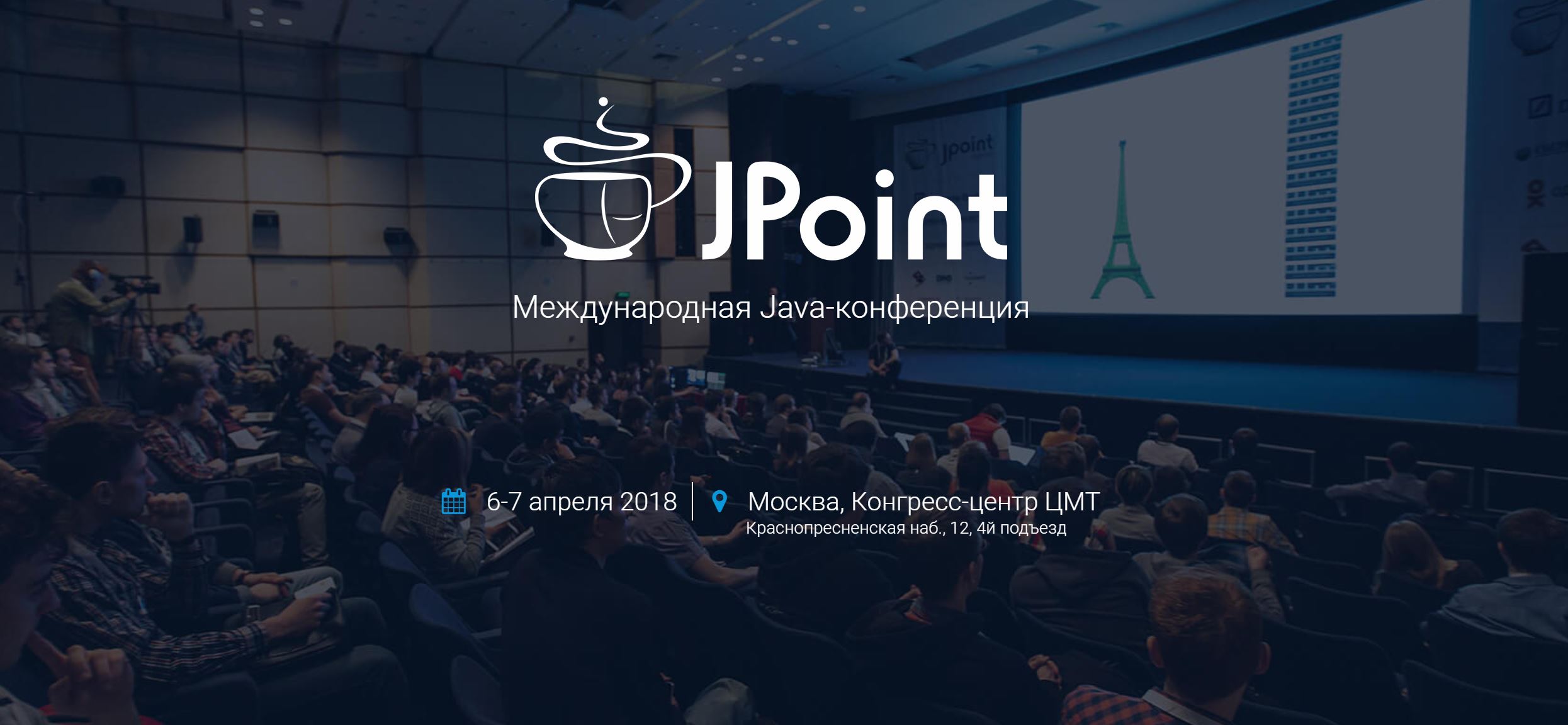
We didn’t have time to get over the impressions of Joker 2017 , and we are already preparing the JPoint 2018 . More precisely, we started cooking it a couple of months ago, so today we already have something to announce! As you can see, java conference we do without pauses.
Let's see what we have:
')
- Title: JPoint 2018 Java Conference .
- Date and place: April 6-7, 2018 , Moscow, Congress Center WTC.
- 10 speakers have already confirmed their participation.
- Call For Papers.
- Exhibition and stands.
- Several trainings.
All the details - under the cut.
Conference program
There is nothing to worry about: only Java, only hardcore! The density of reports will not decrease, the same two days and four tracks.
We will talk about the gut and performance of JVM, concurrency, distributed and highly loaded systems, Java 8/9/10 and selected frameworks and tools (Spring, Spark, BPF, and a lot more! We'll see later). In the meantime, let's look at the reports that are already included in the program:
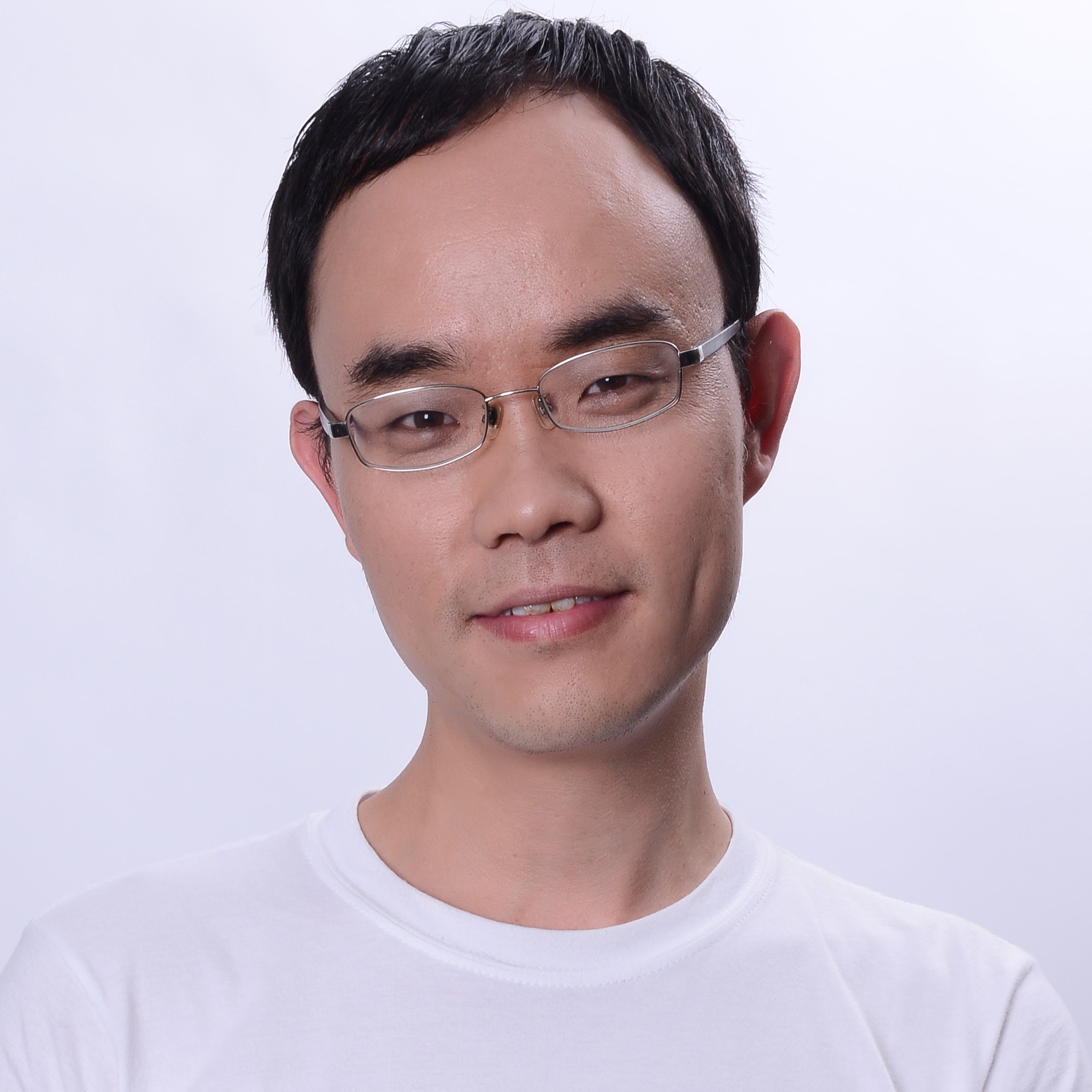 Sanhong Li, Alibaba - Extreme Scaling with Alibaba JDK (AJDK)
Sanhong Li, Alibaba - Extreme Scaling with Alibaba JDK (AJDK)For the last couple of years, participants, friends, and partners have approached me at each of our Java conferences and asked the same question: “Why don't you have Alibaba?” Now we have. And not just the developer of one of the largest projects in the world, but the lead of the JVM direction. What you need for the JPoint. Meet Sanhong Li - a person with experience at IBM, open-source OpenJDK contributor, and now the lead developer of Alibaba JDK, a custom version of OpenJDK.
On November 11, Alibaba again broke its own throughput record, reaching 325,000 transactions per second (60% more than last year!), Almost all of which were performed in tens of thousands of Java services across hundreds of thousands of servers. In this report, Sanhong will talk about how they customized OpenJDK for their tasks, namely:
- On the development of its own, without-GC, mechanism of allocation of objects, allowing you to create objects in the so-called “hidden regions” and work with them as with normal Java objects without a GC overhead.
- On the integration of korutin in JVM for the implementation of asynchronous algorithms.
- About creating custom effective real-time diagnostics for your JVM.
In addition, you will learn exactly how the guys from Alibaba, relying on the analytics of loads on their services, came to the conclusion that they needed such features. In general, the report will be useful no matter how high your load.
 Two reports from Juergen Hoeller, Pivotal
Two reports from Juergen Hoeller, PivotalYou probably know Jürgen, co-founder of the Spring Framework open source project, and if you don’t know, then it's time to get to know - since 2003, he has been involved in release management and is in charge of the core framework of the Spring Framework (for 14 years, it doesn't fit in my head). At JPoint 2018 he will have two reports:
- Spring Framework 5: feature highlights and hidden gems
The key feature of the Spring Framework 5.0 was the support of functional and reactive approaches to development, but in the new version there are many less noticeable and "untwisted" pieces.
The report will include a detailed overview of both the main features and those that Jurgen personally highlights for himself as the favorite and the most useful. In addition, you can find out what's new will be in the upcoming 5.1 release. - Spring Framework 5.0 on JDK 9
At JPoint 2018, Jurgen plans to talk about what will become a vital issue for many Java developers. Of course, you immediately thought about it, the long-awaited migration to JDK 9. That is why Jurgen will also reveal the technical aspects of how the fifth version of the Spring Framework works not only with the G8, but also with the Nine. In this report, Jürgen will show what difficulties in providing compatibility with JDK 9 framework developers face. In addition, here you will find specific and practical recommendations for updating Spring-projects on JDK 9, spiced up with an overview of the benefits and “victims” associated with the upgrade.
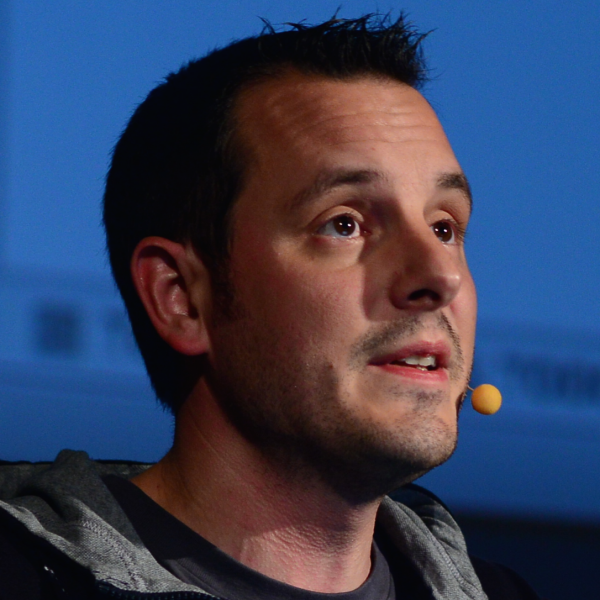 Stephane Nicoll, Pivotal - Reactive Web Applications with Spring Boot 2.0
Stephane Nicoll, Pivotal - Reactive Web Applications with Spring Boot 2.0The new generation of Spring Boot applications is here: with version 2.0, you can use the Spring WebFlux reactive web framework. In a session where everything will be flavored with live coding, you will see how a WebFlux application is born and you will understand how to make the most effective use of the features of Boot: Actuator, Developer Tools and others.
WebFlux allows you to write reactive web components and supports new HTTP runtime, like Netty, so you now have a choice: write in the old fashioned style in Spring MVC or try a new functional approach called WebFlux.fn.
 Sander Mak, Luminis Technologies - Migrating to Java 9 modules
Sander Mak, Luminis Technologies - Migrating to Java 9 modulesJava 9 introduces a new system of modules. It is not necessary to use it, but using it opens up many possibilities. How difficult is it to migrate existing code to use a new system of modules? Migrating an existing codebase from the classpath to any modular system can be a daunting task. Even if you are not going to use modules yet, launching your application on the Java 9 classpath may cause new difficulties. This report will offer solutions to these problems.
To make migration easier, Java 9 provides several features, including automatic and anonymous modules. In the report, we will analyze examples of real code migration based on the Spring / Hibernate application. Consider the common problems that can be encountered during the transfer. You will get good advice and understanding of the system of modules and features of the transfer. The report will serve as an excellent preparation for starting the migration of your code.
 Rabea Gransberger, MEKOS - Refactoring your code to Java 9 modules
Rabea Gransberger, MEKOS - Refactoring your code to Java 9 modulesJava 9 allows you to break the code into modules and give access only to specific packages, thus hiding public classes from prying eyes (and hands ... and code!). In addition, breaking the code into modules, you increase its reusability, simplify support for your solution, and reduce the growth rate of technical debt.
Rabea will show several ways to split an existing monolithic solution into several modules. We will choose tools that will allow us to understand exactly which parts can be separated, and so that everything goes smoothly, we use a couple of tricks in refactoring. In the end, we will look at some complex examples and apply patterns that will allow us to cope with them.
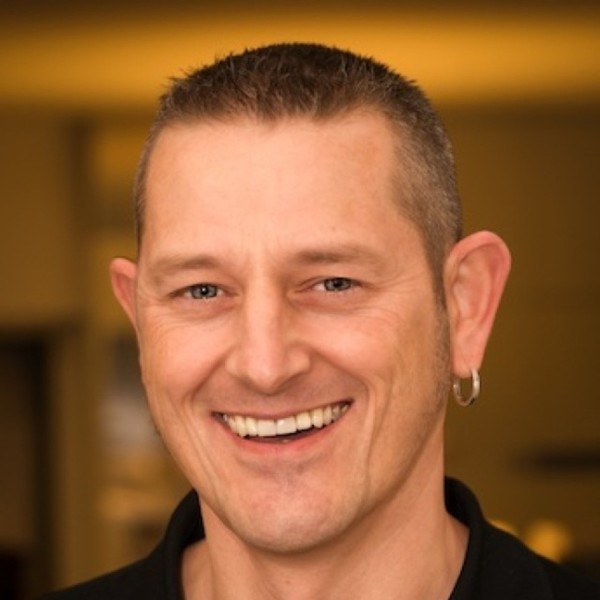 Gerrit Grunwald, Canoo Engineering AG - JavaFX on JDK 9
Gerrit Grunwald, Canoo Engineering AG - JavaFX on JDK 9If at Joker 2017 there were not so many reports devoted to the “nine”, then at JPoint 2018 there won't be any problems with this! The fourth report on JDK 9 in our collection will be presented by Gerrit Grunwald.
The blogger , founder of the Java User Group Münster (Germany), JavaOne Rockstar and Java Champion — Gerrit’s contribution is hard to overestimate. He will talk about how the system of JDK 9 modules influenced the development and operation of JavaFX applications: what's new in JavaFX 9? What do you get that you lose by going to JDK 9?
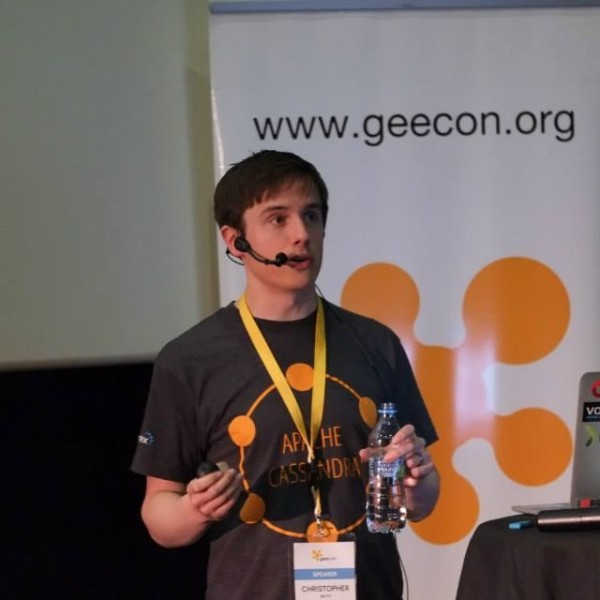 Christopher Batey, Lightbend - Building scalable, back pressured services with Akka
Christopher Batey, Lightbend - Building scalable, back pressured services with AkkaWhat does an asynchronous back pressured program mean? Why is this so important for scalable services? In this report we will try to find answers to these questions.
We will affect:
- thread per request vs. asynchronous services;
- what “back pressure” is and how to work with it down to the network level;
- how to work with back pressure using Akka HTTP and Akka Streams;
- how it compares with other asynchronous programming tools (CompletableFutures, Observables, etc.).
If time remains, we also show how the network application sends back pressure through the application layer protocol, TCP protocol, and directly to the client application.
 Roman elizarov Elizarov, JetBrains - Kotlin Coroutines
Roman elizarov Elizarov, JetBrains - Kotlin CoroutinesA report for those who love Kotlin and the intestines: Roman will tell in detail and show how the korutins were designed and implemented in Kotlin.
There will be a lot of baytkod and benchmarks that will answer such questions as “why we need korutiny”; “What is the difference between CPS and CSP”; “What happens when coroutines are launched, and what overhead projector it gives”; "How is it all implemented on the JVM".
 Douglas Hawkins, Azul Systems - ReadyNow - an "AOT" with profiling for Java
Douglas Hawkins, Azul Systems - ReadyNow - an "AOT" with profiling for JavaI think it makes no sense to explain the difference between the JIT and AOT compilation, we all know it perfectly. JIT is well optimized, but it takes a long time to warm up, and AOT compilation does not allow getting to many non-optimal pieces of code.
The report will focus on ReadyNow technology, the lead developer of which is Douglas. ReadyNow tries to combine the advantages of both types of compilers, avoiding their disadvantages. It is worth emphasizing that Douglas is a developer, not an evangelist, so during the report you can look under the hood of technology and try to understand how this all works. Let's see if ReadyNow is able to (and at the expense of) speed up JIT warm-up and avoid de-optimizations, and also try to understand how the technology allows Java AOT compilers to overcome congenital diseases.
 Sasha Goldshtn Goldshtein, Sela Group - Linux container performance tools for JVM applications
Sasha Goldshtn Goldshtein, Sela Group - Linux container performance tools for JVM applicationsThe “container revolution” has already happened - everyone around is packing, containerizing and deploying their Java applications. However, like any abstraction, containers bring not only joy and happiness, but also problems associated with monitoring, profiling and tracing your applications. The problem is that, despite the fact that a container is just a process with a couple of isolating chips and a resource constraint, many performance tools that work fine under Linux have to be used unconventionally with containers. Some even begin to lie and simply report on the basis of the data of the host, and not the container in which they are running.
In her report, Sasha will tell you how to solve the most common performance problems with containers:
- how to understand the level of resource consumption inside the container;
- problems with CPU usage or CPU resource limits;
- problems with disk or file system delays;
- containerized access to the database.
For this, Sasha has an arsenal of tools prepared: perf, async-profiler, flame graphs and BCC, and several other open and commercial tools you can rely on.
Call for papers
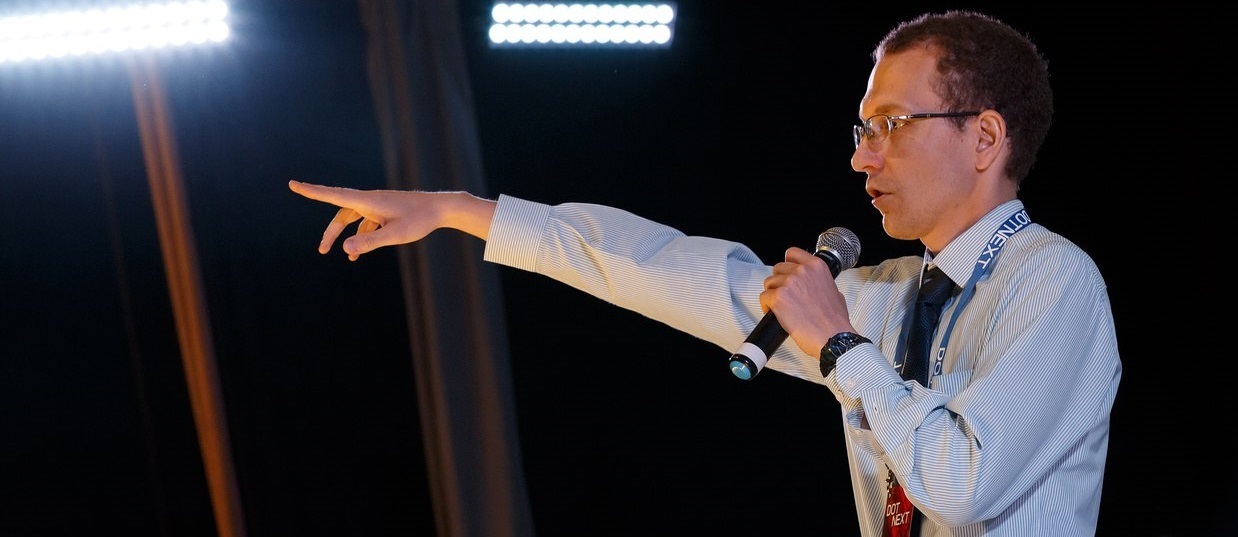
If you think that the people listed above are not good enough, and you can make a report better - submit an application , Call For Papers is open!
However, there is another scenario: if you have an interesting production, and you want to perform on the same stage with the guys from Oracle, Pivotal and JetBrains - also submit a report. It is important to understand that if you doubt or think that you have nothing to tell, it is better to submit an application and consult with our Program Committee, they will appreciate, look and tell. In fact, very often what seems trivial and routine to you may be discovery or best practice for others. So do not be shy!
There is a time to prepare - our Program Committee will help you to make an excellent report from your idea and your ideas: advise what details to add, where to remove the excess, how to bring the presentation to perfection and, of course, will appreciate you in 1-2 workouts. I personally saw several examples when the speaker, completely raw and unprepared, for a couple of months of work with our Program Committee prepared and polished the report in such a way that he then entered the top JPoint.
Discussion areas

Surely you know the feeling when you raise your hand to ask a question, and the presenter suddenly announces: “There is time for one question” - and of course, the choice does not fall on you, but during the break the speaker is hiding behind the doors of the speaker rooms.
If over the past year you have ever been at our conferences, then you know that this does not happen with us. Each report is accompanied by a discussion area . Everybody is delighted with this format: both the participants and the speakers, you can calmly ask specific questions in a special place, the speaker has the opportunity to constructively and thoroughly answer any question, no matter how narrow it is, without thinking about timing or Whether it is interesting to all listeners.
It is the discussion zones that answer the question “why go to conferences, when you can learn everything on the Internet”. It's simple: to personally ask your specific question. Well, at the JPoint, all the conditions have been created for this: in long breaks, the trackers will lead the speaker into the allocated space with an illustration board, seating, and the opportunity to grab a cup of coffee. Now not a single question will drown in timing.
Online broadcast
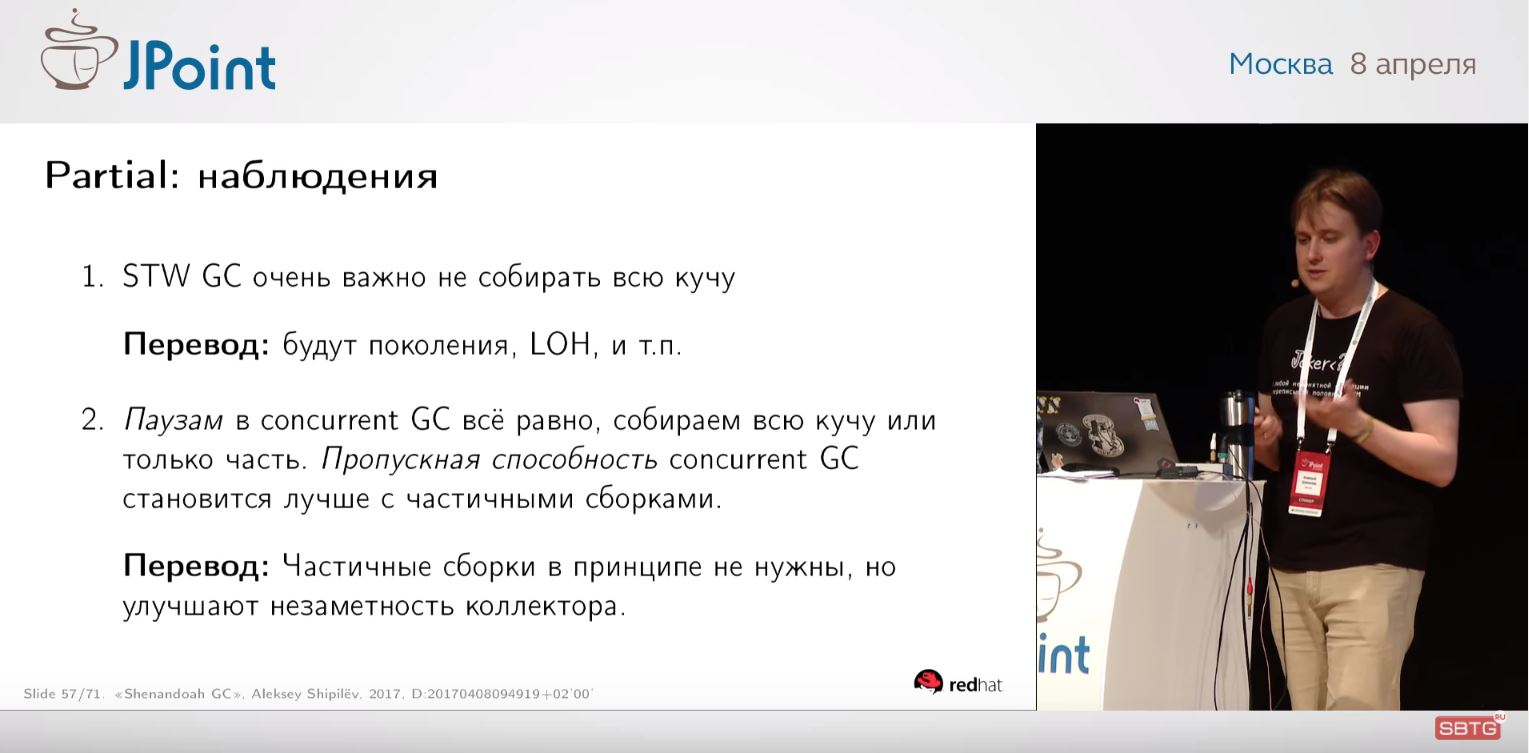
All conference reports can be viewed online by purchasing the appropriate ticket . However, our broadcasts have a couple of chips, which are worth telling:
- Video at 1440p - the extra space is used to simultaneously display the speaker and FullHD slides (or the laptop screen for live coding) on one screen;
- The opportunity to watch reports from any room, you have as many opportunities as the participants who came in person!
- In addition, if you have a question, you can ask the speaker through the Telegram-chat of the conference and immediately get an answer to it;
- Improved sound quality, seriously reworked the recording system;
- In the intervals between presentations, when speakers and participants on the site are retired to the discussion zones, we show the audience of the online broadcast reports and interviews with speakers and sponsors from phillennium and olegchir . These guys know their stuff, you can see for yourself using the example of Joker 2017 ;
- Many minor technical problems were solved, which most did not even notice, but they were there. In general, the feeling of watching the broadcast should be better.
Exhibition and stands

Last time at the JPoint we had 10 stands at the exhibition: Sberbank-Technology, Odnoklassniki, JetBrains, GridGain, Alpha Laboratory and many others. On Joker, 24 companies came to us, if the pace continues, you will have to do a conference in Crocus in a couple of years. :)
This time there will be a lot of sponsors, and they will be interested in: almost all companies are preparing different interactive pieces, ranging from tasks with prizes, to games controlled by the power of thought, or VR attractions. In addition, at each of the booths, you can find out how companies live, work with phlometry (who has a cooler office) and just talk for life with the guys from the largest companies in the IT world.
Trainings
Since this year, together with the conference, we are doing trainings, at Joker 2017 we invited Evgeny EvgenyBorisov Borisov and Kirill tolkkv Tolkachev with two trainings on Spring and Nikolai xpinjection Alimenkov. This time we are expanding the “range” and are in talks with several more coaches.
When will the details, we will inform you. Stay in touch.
To buy tickets
Registration is open, now there are early tickets. If you have already been to JPoint and know what it is - feel free to register ! And if you are not sure, wait for higher prices and the final program. Or watch our three-minute video and try to understand whether you want to plunge into this atmosphere:
Although I always say that the program is more pleasant to wait with a ticket in your pocket.
See you at JPoint 2018!
Source: https://habr.com/ru/post/341750/
All Articles